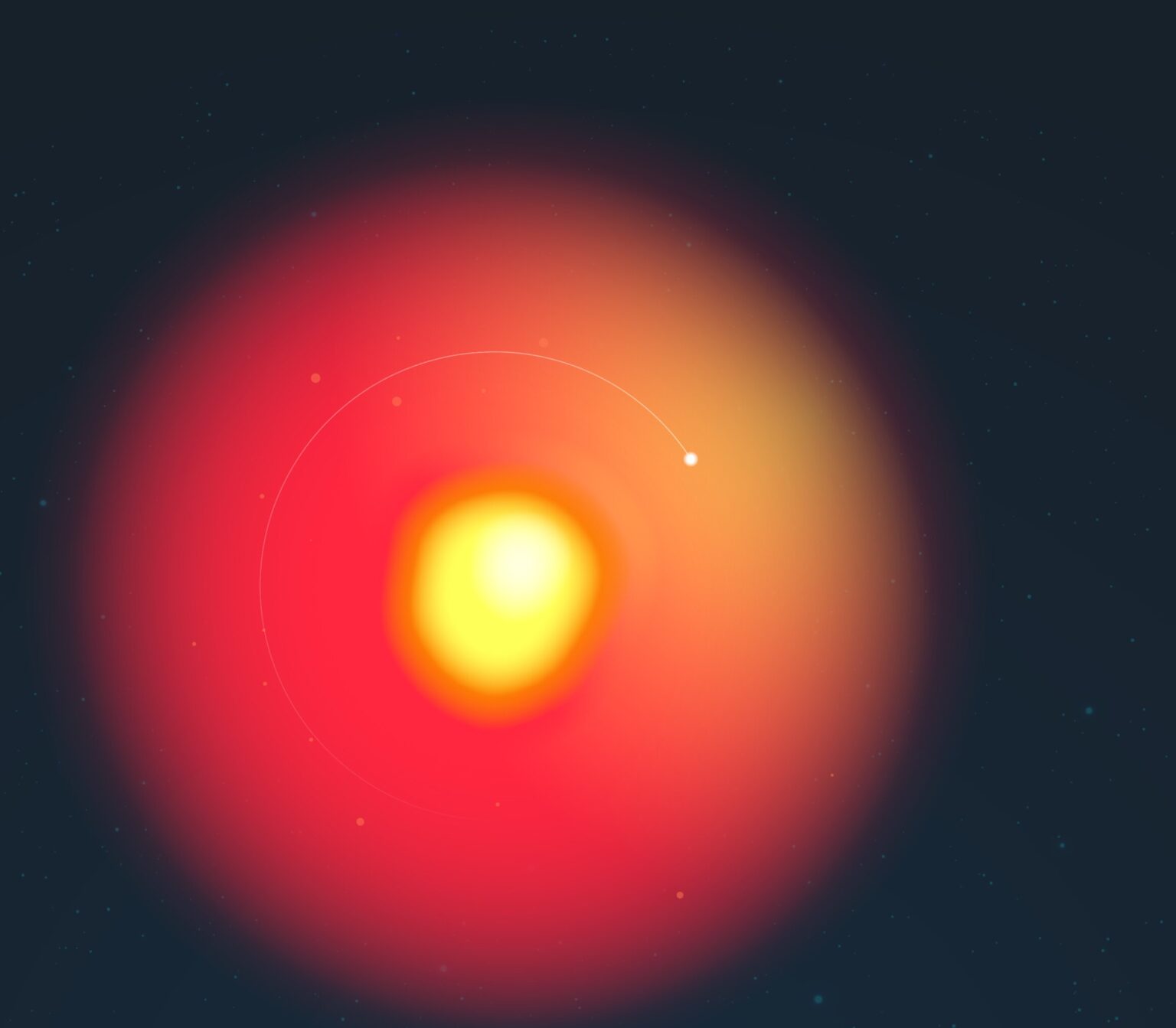The star Betelgeuse is a red giant known for its strange behavior. It is often interpreted as the luminary nearing its explosion. However, scientists have recently suggested that it may have an invisible companion that is responsible for the changes in brightness.

Betelgeuse’s surprising behavior
Betelgeuse is a luminary in the constellation Orion, which has been the hero of sensational publications in recent years. Everyone expects this star to turn into a supernova in the near future. And that’s because observations of it record a constant change in brightness.
At first Betelgeuse faded, then its brightness began to recover. It is clear to everyone that this red supergiant is in the final stages of its existence. The star pulsates, expanding and contracting, and many astronomers have suggested that it is possible to tell exactly how long it has left by analyzing the cyclical changes in its luminosity.
However, the cyclicality itself looks very strange. There are two periods of fluctuations that overlap: short (lasting 1 year) and long (up to 6 years). And if the first one is more or less clear, it is the pulsations of the star itself, the scientists are not sure about the second one.
Betelgeuse partner
And now, there is the study of scientists from Hungary and the United States, which is scheduled to be published in The Astrophysical Journal, and the text is already available on the arXiv preprints site. The study is devoted to modeling the possible causes of secondary variability.
It has completely ruled out the possibility of an internal source for these pulsations, meaning they are not coming from the giant star itself, which is about 100,000 times brighter than the Sun. Meanwhile, the most probable explanation was the presence of an unknown companion at its side.
It is so close to Betelgeuse that no Earth-based instrument can detect its presence as yet. However, this small star absorbs the gas and dust that the red giant ejects, and thus affects its luminosity.
When will Betelgeuse end?
What kind of object is the “companion” of Betelgeuse, scientists are still not sure. It is quite possible that it is a neutron star — the nucleus of a dead luminary with extremely high density and a powerful magnetic field. But if it were, astronomers would have recorded a powerful stream of X-ray radiation from Betelgeuse. But there is none.
Therefore, it seems more possible that Betelgeuse’s companion is a sun-like star. In fact, it may even be twice the size of our luminary, but still comparable in mass to it. That’s what scientists will now be hunting for.
But the main question still lies ahead. If part of all the fluctuations in the red giant are not due to its state at all, what is the merit of all the predictions about when Betelgeuse will become a supernova? In fact, it could actually happen in a hundred thousand years, because there is evidence that the star got its current form quite recently.
Provided by phys.org


